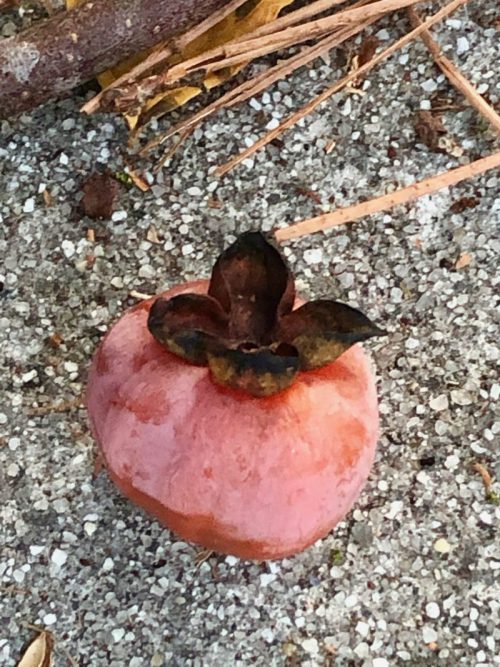
My persimmon trees drop their burnt-orange fruits, with star-burst caps, like surprise presents on my driveway on autumn mornings.
The fruits take special aim at the windshield wiper well on my car. A bit worse, a persimmon can truly make a sloppy mess if it’s stepped on and tracked it into the house.
Despite their untidiness, there’s something special about these storied Virginia trees. Persimmons were among the first trees recognized by early settlers. Diospyros virginiana is its Latin name.
I grew up knowing that Captain John Smith wrote about unripe persimmons that turned “a man’s mouth awrie” but once ripe, the fruit was delicious. I also grew up knowing the phrase, “as happy as a ‘possum up a persimmon tree.”
Persimmon fruits, a little smaller than plums, start out purplish and ripen to their deep orange. That’s when the opossums come lumbering over to dine in the night.
Many other mammals, like raccoons and foxes, also feed on persimmons to fatten up for winter. Songbirds love them too.
For years, I used to gather the fruits and, save them in the freezer. Once I had a freezer bag of persimmons, I put the fruits through a hand-operated food mill to separate the pulp from its great big seeds and baked persimmon bread for Thanksgiving. These days we lazy cooks turn to the Japanese persimmon, much bigger and easier to deal with in the kitchen.
A persimmon tree with its awkward branches and chunky bark is not really a very pretty tree for most of the year But underneath that messy hair-do is wood so strong and dense that it has been used to make sturdy items like golf club heads that must be shock-resistant.
Persimmon-tree appreciation time comes in fall when the orange fruits hang like ornaments from the tree and opossums and raccoons climb to dine. Each morning, I pick up the fallen fruits and toss them back in the hedgerow, feeling satisfied that these little native trees, part of the cycle of life in the forest, are mine.
Do you have a favorite tree, a secret tree grove, or neighborhood climbing tree that you love? Let us know your stories about trees and the critters that live in them. Comment in the box below or email me at barrow1@cox.net
Tree Resources.
“Common Native Trees of Virginia, Tree Identification Guide” and “Common Native Shrubs and Woody Vines of Virginia, Identification Guide.” Published by the Virginia Department of Forestry, the books are available to download free from the forestry department website: www.dof.virginia.gov. Both also can be ordered online for $12.95 each from the Virginia Department of Game and Inland Fisheries web store: www.shopdgif.com
Tree Reads.
“The Overstory by Richard Powers” is a novel about trees, love of the natural world and how far we have come from it in our daily lives. “The Overstory” is the November book for the PBS NewsHour-New York Times book club.